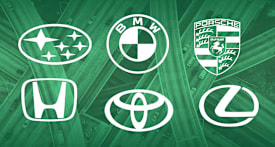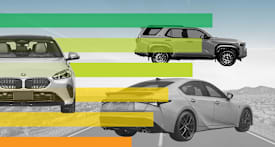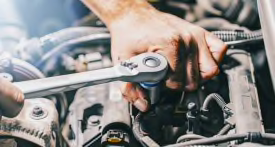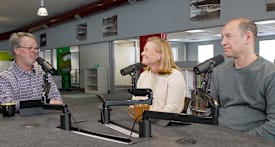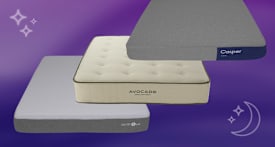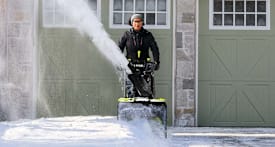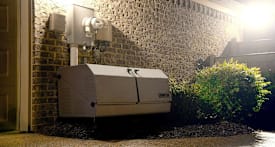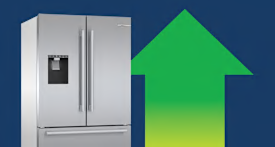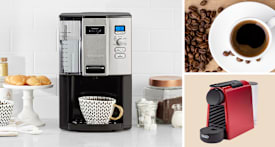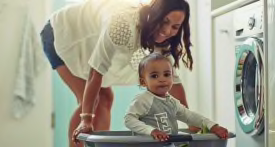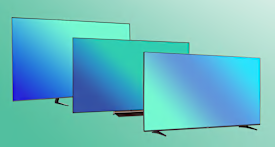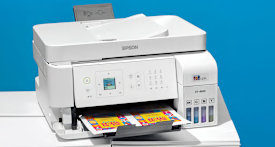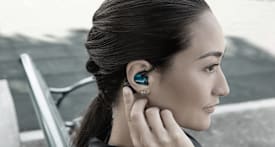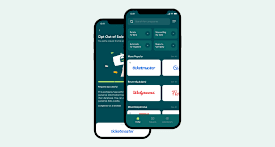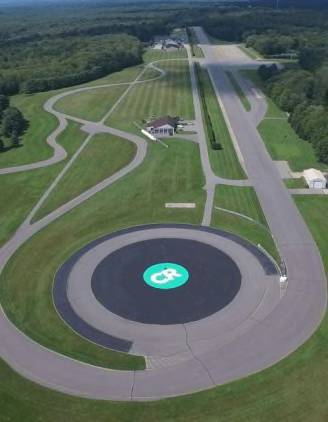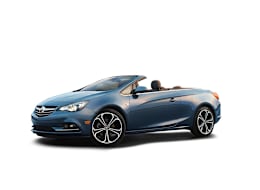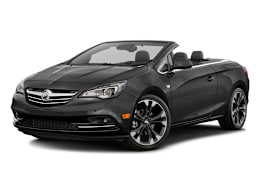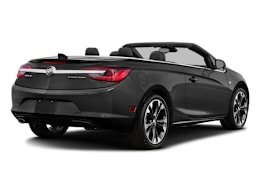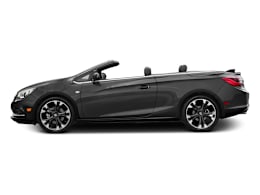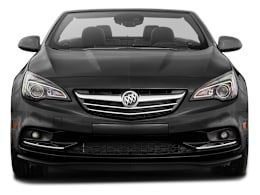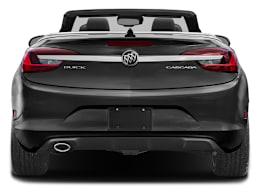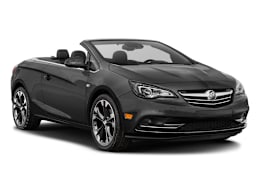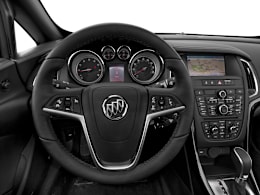Few things can brighten your mood as much as a top-down drive on a warm, sunny day with family or friends. But affordable convertibles that comfortably fit four people have been scarce. GM's response? The Buick Cascada, imported from Europe by way of its Opel brand. This ragtop is a well thought out convertible, despite that some aspects of the car are rather dated and driving excitement is limited.
With the demise of the Chrysler 200, Toyota Solara, and Volkswagen Eos, affordable four-seat drop-tops have been limited to either the sporty rear-drive Chevrolet Camaro and Ford Mustang with neither rear passenger room or the same level of convenience, or the small, expensive Audi A3 and BMW 228i. So the Cascada's arrival is perfect timing.
The Cascada resulted from a cross breeding of the Buick Verano and Regal sedans. Sold overseas for several years, it finally joins the U.S. marketplace. Pricing starts at $33,990, but it's well equipped including leather heated seats and navigation. To put that into perspective, the Cascada's nearest front-drive competitor is the Audi A3 Cabriolet, but its base price matches a loaded Cascada and it winds up costing well over $40,000 when comparably equipped.
The Buick is powered by a 200-hp, 1.6-liter turbocharged four-cylinder engine that does a fine job of hauling around this heavy car. It should be surprising for this boulevardier, but acceleration is uninspiring. At a paltry 22 mpg overall on premium, fuel economy is pretty close to much larger and quicker SUVs.
Where the Cascada gets top marks is in top-down friendliness, thanks to many clever details. The well-insulated fabric top does a commendable job keeping out noise while keeping in warmth. Fully power operated with no need to release any latches, the top opens or closes in a quick 17 seconds, tucking under a hard cover that keeps everything looking neat and tidy. It can open and close on the go at speeds of up to 31 mph, which is very handy.
Windblockers keep top-down interior buffeting at a minimum. A power-operated presenter brings the seat belt buckle as you close the door. A single switch conveniently raises or lowers all windows. Both the driver's and front passenger's seats power-scoot forward to ease access to the rear. These are all niceties you get in a $60,000 Audi, BMW, or Mercedes; you won't find them in the Mustang or Camaro convertibles.
Made for cruising smooth roads, the Cascada's body structure is largely free of the unwanted shake that afflicts many convertibles. All Cascadas come standard with 20-inch wheels and low-profile tires. While the ride is steady and composed, that large and stylish wheel/tire combination inherently limits some absorption, allowing sharp bumps to noticeably come through. Consider it a better match for smooth Florida fairways rather than pot-holed Pennsylvania turnpikes.
Handling is responsive, with fairly quick reflexes and prompt steering response. Body lean is kept in check, but don't expect the Cascada to be a sportster like the Camaro or Mustang. That said, it certainly is more nimble than the long-retired Solara or Sebring/200 convertible.
The interior is well-trimmed with many little stylish touches. Front seats are comfortable and supportive, including four-way power lumbar support adjustment. Heated front seats and a heated steering wheel stretch the open-top season, facilitating convertible motoring in chilly late-autumn or early-spring weather. The belts are kept out of the way when climbing into the rear seat; you don't need to limbo under them or high-step over them as in many other two-door cars.
Two adults will be able to sit in the rear, but with the top up, head room is restricted. Also restricted is the driver's view, thanks to a very small rear window and thick blind spots all around. Unfortunately, blind-spot monitoring is not available, but at least a rearview camera is standard.
Some of the Cascada's dashboard details are dated, a sign of this design's age. A sea of buttons and knobs makes the controls look daunting at first. Inserting a key instead of having a push-button start -- especially in a $30,000-plus car -- is just so 2008. It's a far reach to the small IntelliLink infotainment touch screen. User friendliness and connectivity is a generation behind, with the system lacking Apple CarPlay or Android Auto.
Sunseekers who want some wind in their hair and enjoy some niceties without breaking the bank now have a choice from Buick. They'll get an OK-driving car that is optimized for convertible duty.
